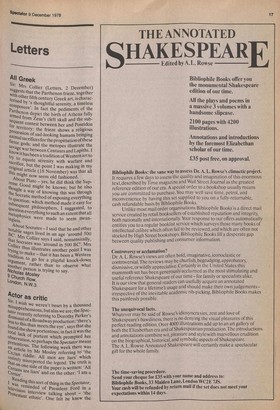Alt Greek
Sir: Mrs Collier (Letters, 2 December) suggests that the Parthenon frieze, together With other fifth century Greek art, is characterised by 'a thoughtful serenity, a timeless composure'. In fact the pediments of the Parthenon depict the birth of Athena fully armed from Zeus's cleft skull and the subContest between her and Poseidon for territory: the frieze shows a religious Procession of sad-looking humans bringing animal sacrifices for the propitiation of these tierce gods: and the metopes illustrate the savage war between Centaurs and Lapiths. I know it has been a tradition of Western art to try to equate serenity with warfare and sacrifice, but the point I was making in my original article (18 November) was that all this might now seem old fashioned. About Plato yes, he did think the Supreme Good might be known; but he also thought a way of knowing this was through the Socratic method of exposing everything to question: which method made it easy for subsequent philosophers, I suggested, to question everything to such an extent that all ,metaphysics were made to seem mean fogless. fogless.














































 Previous page
Previous page